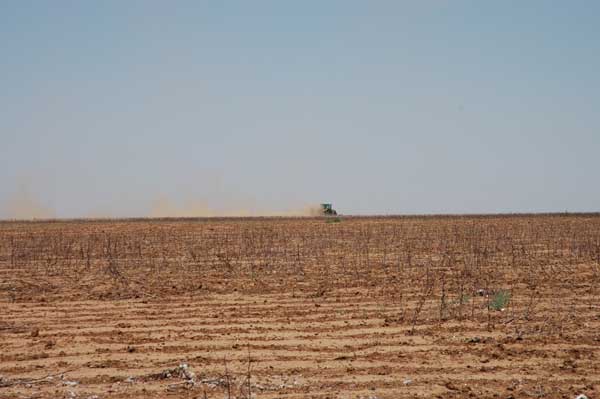August 9, 2011

Dry conditions through vast swaths of the country, including parts of Kansas, Oklahoma and Texas, are influencing everyone from homeowners to farmers to business managers. But, a short-term dry spell and a full-fledged drought are not the same thing.
“Drought is a major focus for many this summer,” said Kansas climatologist,
Mary Knapp. “One means of measuring a drought is the Drought Severity Classification, developed by the National Drought Mitigation Center, based at the University of Nebraska,” (http://droughtmonitor.unl.edu).
When conditions are drier than usual because of a lack of rainfall or snow, factors including soil moisture levels, weekly streamflow, precipitation, and the Palmer Drought Index are taken into account to determine conditions across the country. For instance, about 75 percent of Kansas currently is experiencing “abnormally dry” to “exceptional drought” conditions, said Knapp, who maintains the Kansas Weather Data Library at Kansas State University.
“It’s really eye-opening to view the Drought Monitor that shows the whole United States. You get the full extent of the current drought situation.”
The conditions in affected areas have forced sales of cattle, due to a lack of forage. They’ve curbed crop development and dried out home landscapes. Water-use restrictions are in place in multiple locations, and the drought has taken a toll on water quality in some areas, she said.
A comparison of the various indices used to determine the severity of dry conditions and their current values for Kansas climate divisions are on the Kansas Water Office web page (http://www.kwo.org/reports_publications/Drought.htm).
The rankings used by the National Drought Mitigation Center are:
Abnormally Dry – Going into drought – short-term dryness may be slowing planting, slowing growth of crops or pastures. The label also can apply to an area that is coming out of drought, with lingering water deficits and with pastures and crops that are not fully recovered.
Moderate Drought – Some damage has occurred to crops and pastures. Streams, reservoirs, and/or wells are low. Water shortages are developing or imminent, and citizens are being asked to restrict water use voluntarily.
Severe Drought – Crop or pasture losses are likely, and water shortages are common. Water restrictions are imposed.
Extreme Drought – Major crop and pasture losses are occurring, and water shortages are widespread. Water restrictions are in force.
Exceptional Drought – Exceptional and widespread crop and pasture losses occur, while shortages in reservoirs, streams, and wells create water emergencies.
More information about drought conditions in Kansas and other weather information are available at www.ksre.ksu.edu/wdl. The Kansas Weather Data Library is part of K-State Research and Extension.
You May Also Like




